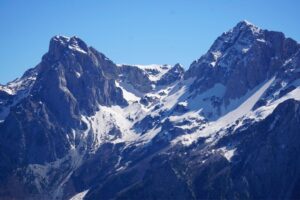
How to hike from Valbona to Theth
Albania | Our guide to hiking from Valbona to Theth; two beautiful traditional villages lying deep in the Albanian Alps
Having participated in free walking tours in Cartagena, Medellín, Popayán and Cali, none had started like this. In what was a very peculiar introduction to CarpeDM’s offering, the owner went off on a drawn-out tangent waffling on about ayahuasca and spirituality. Thankfully Erika, our guide, was on hand to rescue a truly bemused group of tourists and treat us to a wonderful couple of hours touring the charismatic colonial centre of Quito.
Meeting Point: Antepara E4-70 y Los Rios, Quito (next to The Secret Garden Hostel)
Starting Time: 10:10am
Our first stop was the impressive Basilica del Voto Nacional (The Basilica of the National Vow); the massive Gothic church that is a focal point in the city’s skyline. Said to be one of the biggest churches in South America with 24 chapels, the building remains technically incomplete after nearly 130 years, lending to the local legend that on the day construction is finished, the world will end. We didn’t actually go into the church as part of the tour, but Erika walked us around the perimeter pointing out key features in the facade. It’s unusual in that the exterior includes animal iconography including Iguanas, Tortoises and Armadillo’s – not to mention a spire specifically dedicated to Condors.
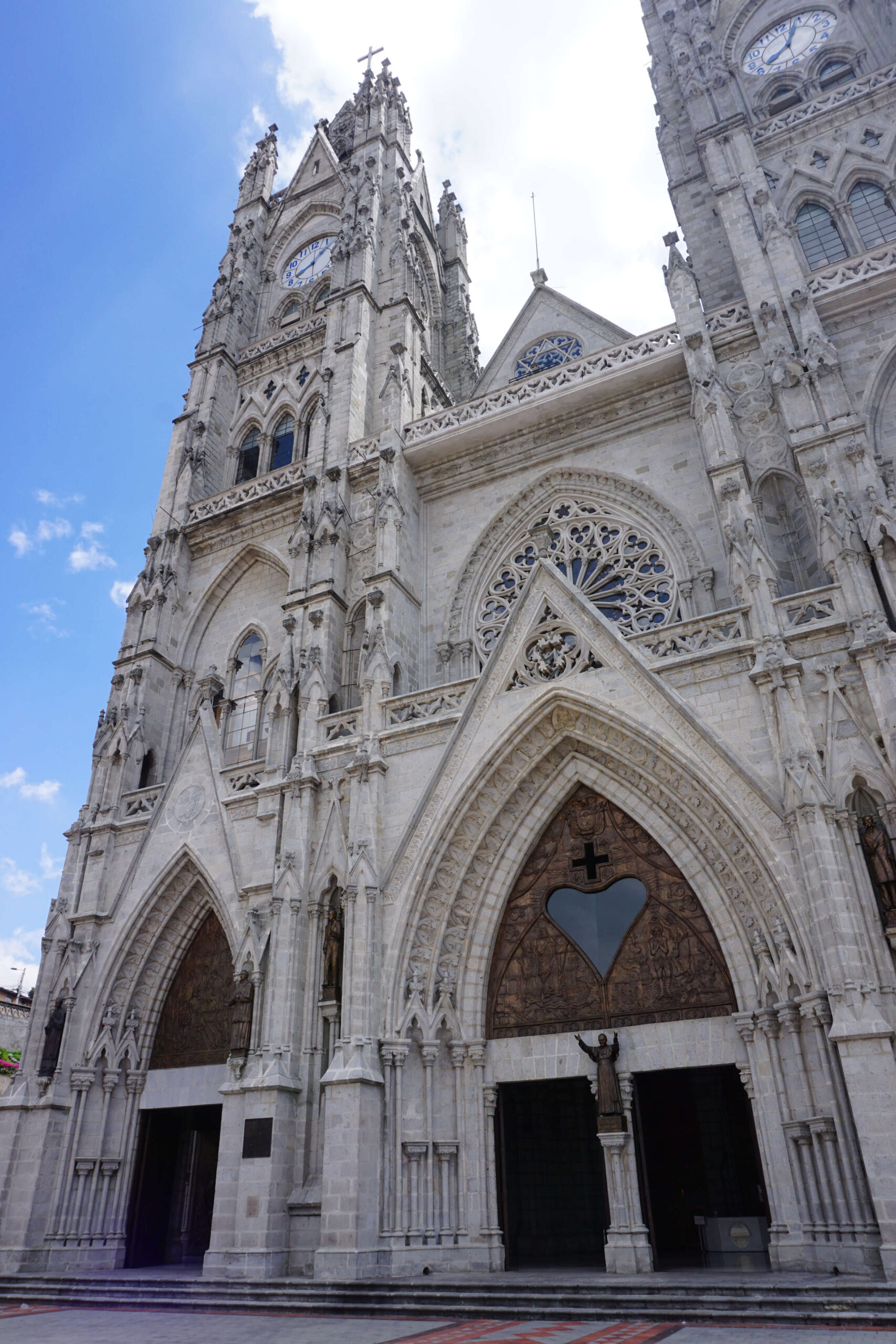
It’s a national monument with some interesting side stories. The Panteon Nacional de Jefes de Estado is the final resting place of three Ecuadorean presidents. However, according to Erika, anybody with the financial means can secure burial there via a donation of money or materials to build the church. Another anecdote is that the church is built on land formerly owned by two rich families, with the message conveyed that if they wished to go to heaven, they were required to donate their land!
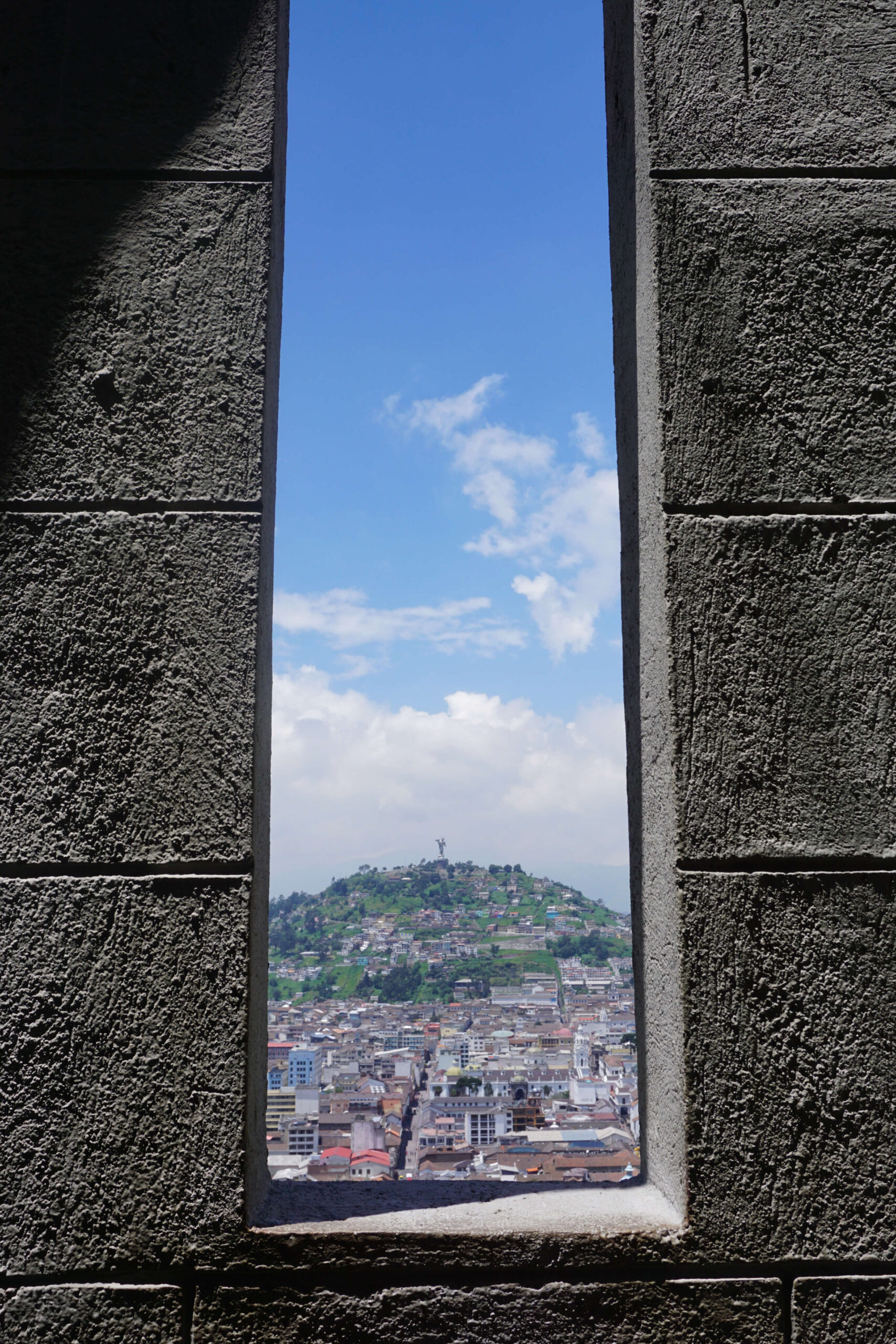
The tour provides a taster for this venue, but I’d definitely recommend returning to admire the structure in your own time. For a fee of $2,00, you can also climb the towers for some fantastic views of the city and surrounding mountains.
As the group strolled down the hilly cobbled streets into the old town, we stopped off at the museum dedicated to Camilo Egas, one of Ecuador’s most important 20th century artists. We were given time to have a brief wander around the exhibition and admire his works. Many were unique at the time for featuring indigenous groups, faithfully recreating pieces of important cultural identity including costumes, customs and rituals.
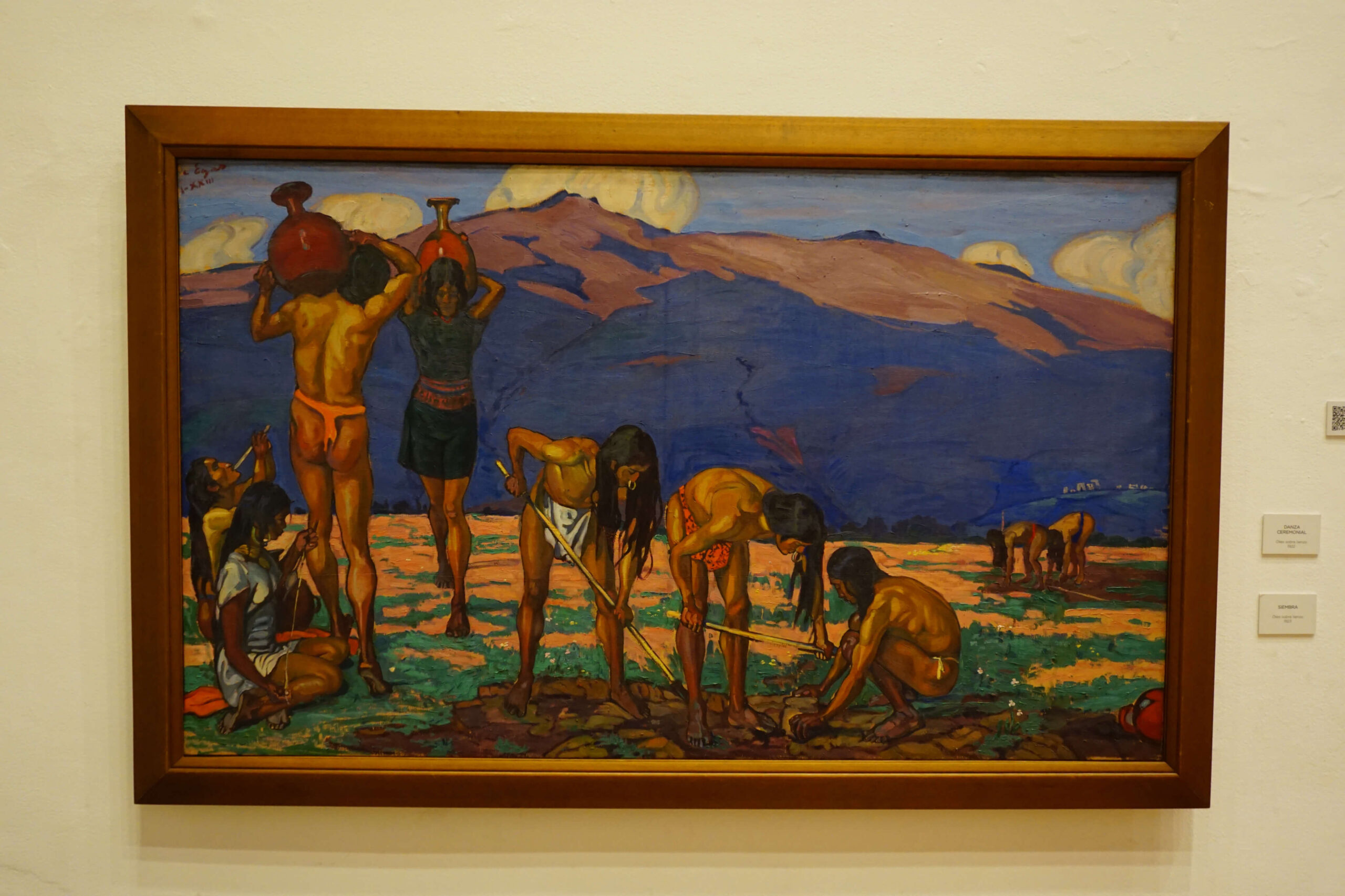
Away from the art, another point of interest within the museum was the entrance itself. With the early morning heat rising, Erika pointed out how the entrance remained cool. This is as a result of being constructed from volcanic rock. Furthermore, the swirling patterns built into the floor were actually built from the bones of young calves, part of a spiritual theory that an individual leaves their negative energy at the front door of the building and only takes in positive vibes. Upon exit, you’d take your negativity with you on your way out. An interesting theory but not one I’ll likely adopt in my front porch at home.
This was an unusual stop and one I personally found to be of great interest as we delved into the world of the Amazon’s indigenous tribes. First, we discussed ayahuasca, the cultural significance and the ceremonial process for taking the plant. Prior to the ceremony, you’re required to abstain from consuming meat, drinking alcohol and having sex. Interestingly, if you did have sex during that time and then took ayahuasca, you’d apparently feel the spirit of your partner in your body. Upon consumption of the plant, recipients tend to be sick whilst it undertakes a cleansing process. Visions then appear and have been known to give users enlightenment, clarity and understanding regarding the next stage in their journey through life. Fascinating stuff.

We were also presented with a shrunken human head; this one wasn’t real but a life-sized replica roughly the size of your fist. Again, this was a traditional amazonian act during war, when a victorious tribe leader would decapitate the chief of their rivals, burying the rest of their corpse far away to prevent them passing through to the afterlife. In what sounds gruesome, they’d boil the heads three times, shrinking and wearing it around their neck as a warning to other tribes. We also checked out the numerous artefacts adorning the walls around the home in what was a unique insight into another world.
Read more… The Ciudad del Mundo article includes illustrations from their exhibition demonstrating the process.
A most welcome, surprising addition to the tour that, as someone with a very sweet tooth, made my day. Normally, you’d have to spend $5.00 in-store for access to the museum but we were able to go straight through for free. Ecuador is one of the world’s leading producers of the cacao bean, the central ingredient in chocolate, rearing seven different species. Erika educated us on how the best chocolate has the highest percentage of cacao and the process by which it is manufactured. She also cut open the actual cacao fruit and handed out the raw beans. Pale, fleshy and very slimy, they were actually very juicy. You can’t chew them and it’s best to stick to just the one as they can have an uncomfortable laxative effect if you have too many.

No doubt though that the best part was the tasting session. We sampled what must have been ten different types of chocolate ranging up to strengths of 75% cacao, including one with raw sea salt. All were delicious. As we departed, we were able to pass back through the shop to make any purchases before commencing with the next part of the tour.
Fact… Did you know? White chocolate is made with cacoa butter, the waste from cacao beans.
Lying at the heart of historic old town, the Plaza Grande is alive with the hustle and bustle of city life. Locals congregate on the benches next to the well-tendered gardens watching the world go by as jovial street-sellers advertise their wares and newspaper sellers call out the daily headlines. There’s a small, peaceful protest ongoing outside of the Palacio de Gobierno, the seat of the Ecuadorean presidency. This square is a place of importance to the people of Quito and indeed, Ecuador. Our guide took us through the events of the 10th August 1809 when after nearly 250 years of Spanish rule, the citizens of Quito were the first in Latin America to rebel and declare independence. Tragically, it was quickly suppressed at the cost of 300 lives but was a key milestone in the events that later led to the country achieving its goal.
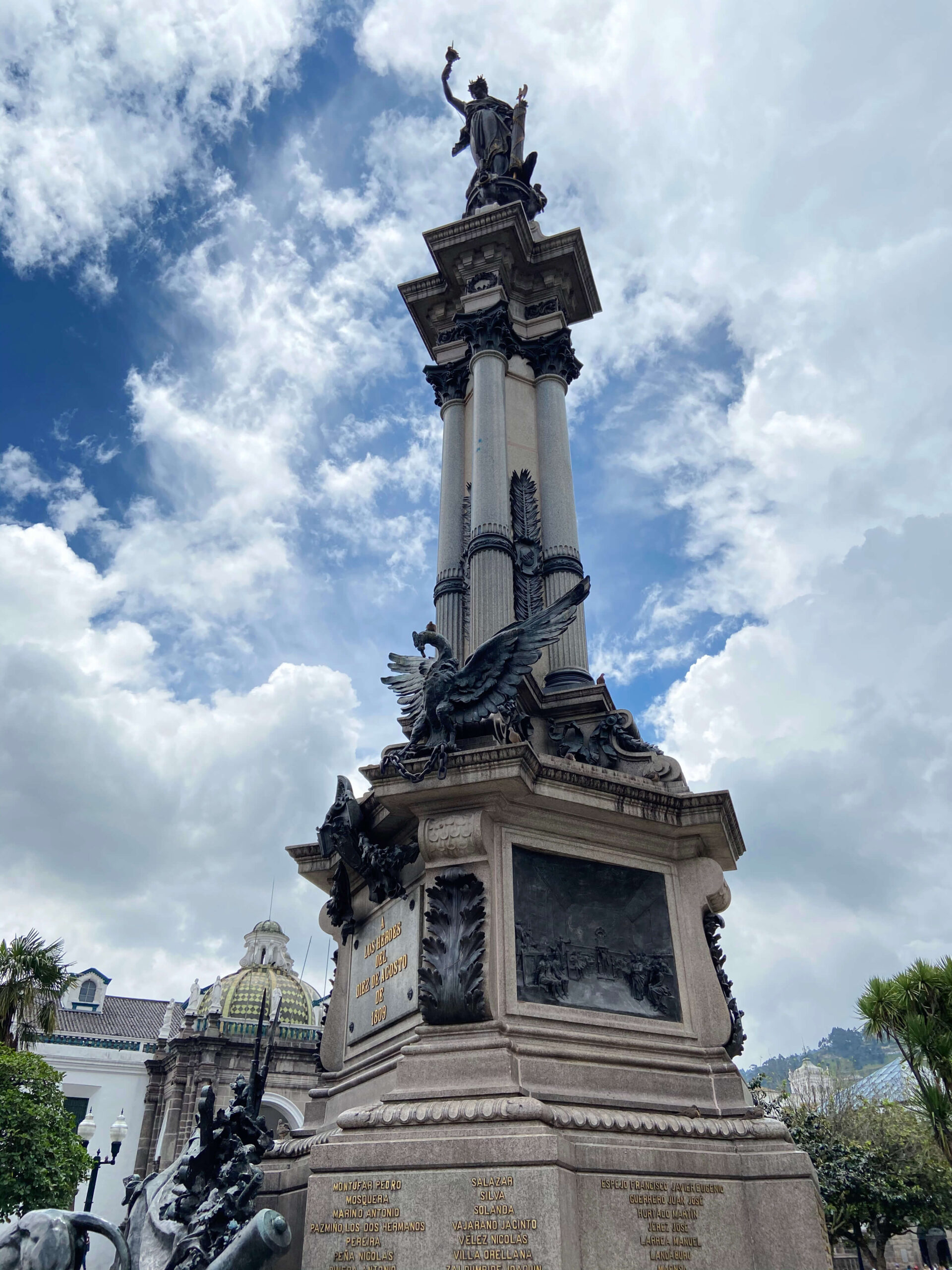
This is commemorated in the monument at the centre of the plaza; the pinnacle of which features Liberta, the Goddess of Liberty. There were some very intricate yet interesting details such as the starving lion representing the Spanish and the loss of their Kingdom. Have you ever wondered why Ecuador, Venezuela and Colombia all have similar looking flags? Prior to becoming individual states, they were united as one country called Gran Colombia. According to Erika, each of the three colours in their flags are symbolic; yellow is for the sun and gold taken by the Spanish, blue is for the colour of the ocean and red represents the blood spilt by those who fought for the liberty of the nation.
Fact… Did you know? Every Monday at roughly 11:00am, the President of Ecuador will appear on the balcony of the Palacio de Gobierno during the changing of the guard to wave to onlookers.
As thoughts began to turn towards lunchtime, we were taken to the rooftop of the Centro Cultural Metropolitano; an important location for university education in the city. This beautiful old location is home to the municipal library and lecture rooms, hosting cultural events including art exhibitions. It is also steeped in history, having been the site in which royalist forces held a group of revolutionaries in 1809 before murdering them 12 months later.
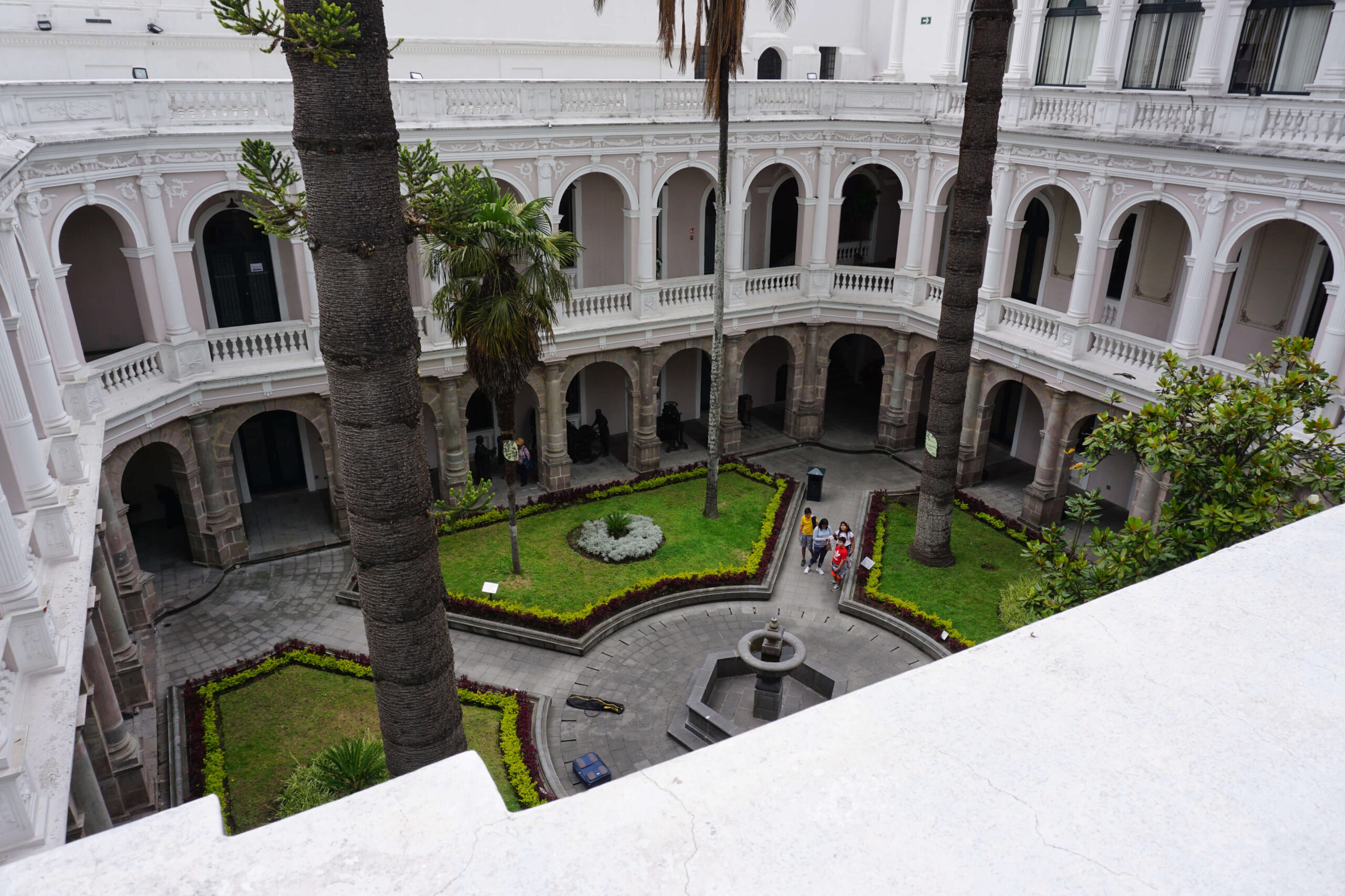
Three hours of walking had given the majority of the group a healthy appetite so Erika took us to a local, family-owned restaurant called Jugos de la Sucre. The group squeezed in and we were presented with a number of empanada options including meat and vegetarian as well a variety of traditional Ecuadorean fruits. The empanada’s were some of the best I had during my time in both Colombia and Ecuador and, at a cost of just $1.00 each, made for a cheap and delicious lunch. Whether you take the tour or not, if you’re in the area and looking to keep costs down, I’d recommend a visit.
Unfortunately, after lunch we were disrupted by a torrential downpour. Erika and her team were very professional in keeping the tour moving on to the Museo de la Ciudad, which was Quito’s first hospital and is now a museum. It was an interesting insight into nursing practices undertaken by the nuns and priests hundreds of years ago, and exposed some dark tales including the practice of disposing of bodies down into an old ravine that was previously next to the hospital. Apparently, it took twenty years to fill thereafter.
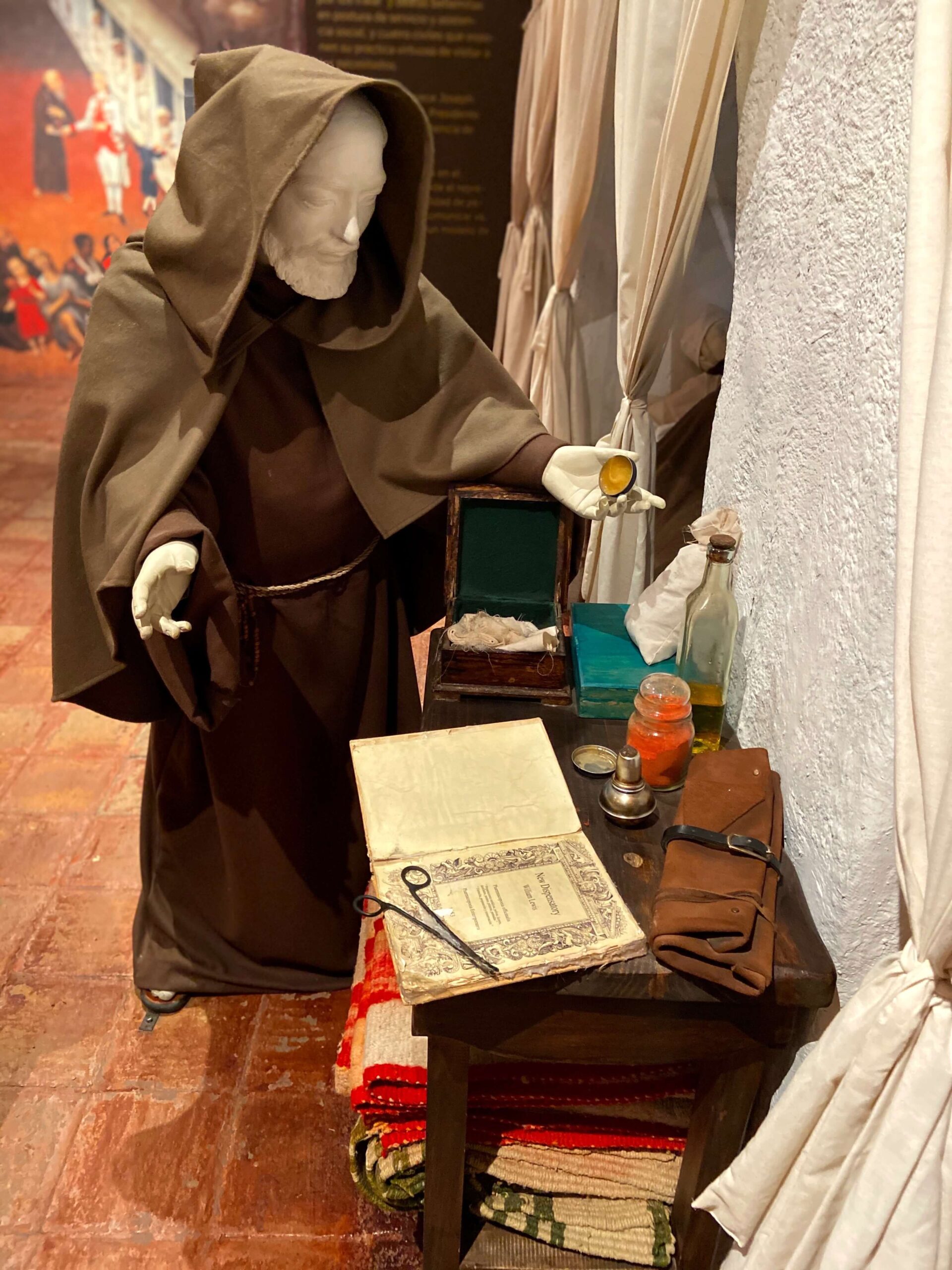
At this point, my companions and I decided to end the tour early whilst Erika continued with the group; two of them had to get to the airport to meet a friend flying in and were worried about being delayed due to the weather. We handed over our tips and compliments on the excellent tour we’d been given.
After a questionable start following the owner’s introduction, Erika had put on a fantastic walking tour that thoroughly delved into the fabric of Quito and took us to locations we’d never have known about had we not attended. If you’re looking for a Free Walking Tour with depth and variety, I’d look no further than CarpeDM.
Read more… Quito: The “Light of the Americas”
Share this article with friends on social media…

Albania | Our guide to hiking from Valbona to Theth; two beautiful traditional villages lying deep in the Albanian Alps
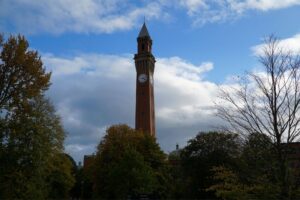
United Kingdom | The complete guide to the Birmingham Tolkien Trail; the original Lord of the Rings tour. Discover what inspired J.R.R Tolkien’s fantasy epic!

Depth of Mind is a travel blog providing honest, trustworthy advice to help aspiring travellers achieve an authentic travel experience.
All rights reserved – photography cannot be used without the express permission of the author.
© Depth of Mind 2019-2023
SIGN UP FOR THE NEWSLETTER
